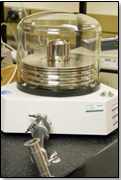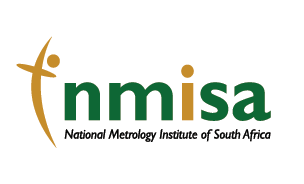About
The Pressure laboratory maintains the National Measurement Standards for Vacuum and Pressure. Calibration services are offered on a wide range of Pressure, Vacuum and Gas Flow instrumentation. Details of which can be found under the “How can we help you?” section.
Key Facts
The Pressure Laboratory, which includes a Vacuum Laboratory, is one of the oldest laboratories at NMISA. In fact, pressure standards were already being established in the late 1950’s. Initially, the driver was the South African Weather Bureau, but later the South African Airways became the main technology driver. Metrological traceability for barometric pressure measurement was a requirement of the international airline association due to its importance in accurate altitude measurement for safety. Pressure is a derived parameter and obtains its metrological traceability from the NMISA Length and Mass Laboratories.
The Pressure Laboratory currently has Calibration and Measurement Capabilities (CMCs) published in the BIPM Key Comparison Database (KCDB) which demonstrate NMISA’s international metrology equivalence. The Pressure Laboratory is also ISO/IEC 17025 accredited from 1,4 kPa to 7 MPa for pneumatic pressure and 0,5 MPa to 500 MPa for hydraulic pressure.
The Pressure Laboratory can also perform vacuum calibrations, but these are not yet covered by the current scope of accreditation. The current National Measurement Standard for pressure is a DHI Pressure Balance together with its dedicated weight stack. See Figure 1 below.

Figure 1: DHI Pressure Balance with Weight Stack
The Pressure Laboratory generates/measures pressure in terms of force and area according to the basic formula (1):
.PNG)
Where:P is the pressure in Pascals (Pa), F is the force in Newtons (N) and A is the effective area of the piston/cylinder combination in metres squared (m2)
The force is derived from mass and the area is derived from dimensions according to basic formulae (2) and (3):
![]()
.PNG)
Where:F is the force in Newtons (N), m is the applied mass in kilograms (kg) and g is the gravitation acceleration constant in metres per second squared (ms-2)
Where:A0 is the effective area of the piston/cylinder combination in metres squared (m2) at zero pressure. r is the radius of the piston/cylinder combination in metres (m).
How we can help
- High Accuracy Pressure Gauges,
- High Accuracy Pressure Transducers,
- High Accuracy Barometers,
- High Accuracy Pressure Balances
- Vacuum Gauges
Development of National Measurement Standards
Current development work includes the resurrection of the vacuum calibration capability to 10-6 mbar, work on a Furness Low Pressure Standard to bridge the gap between the pneumatic pressure scale and vacuum, as well as an investigation into the establishment of Series Expansion Primary Vacuum Standard. These activities will support low pressure and vacuum measuring instruments used in research, manufacturing industry and medical fields.
The team
Name and Surname
|
Designation
|
Email
|
Telephone
|
Thomas Mautjana
| Senior Manager Quantum Technologies
|
tmautjana@nmisa.org
| +27 12 947 2880
|
Events
Technical Advisory Forums (TAFs) are held periodically
Contact Us
Email us at:
pressure@nmisa.org or
calibrationoffice@nmisa.org
